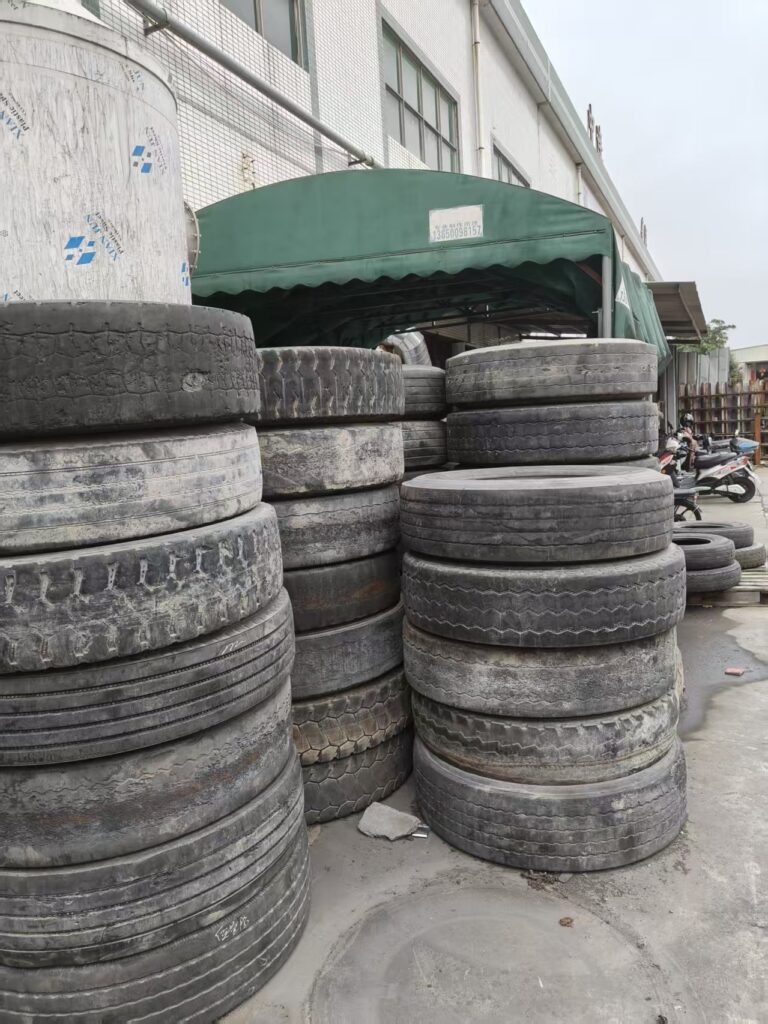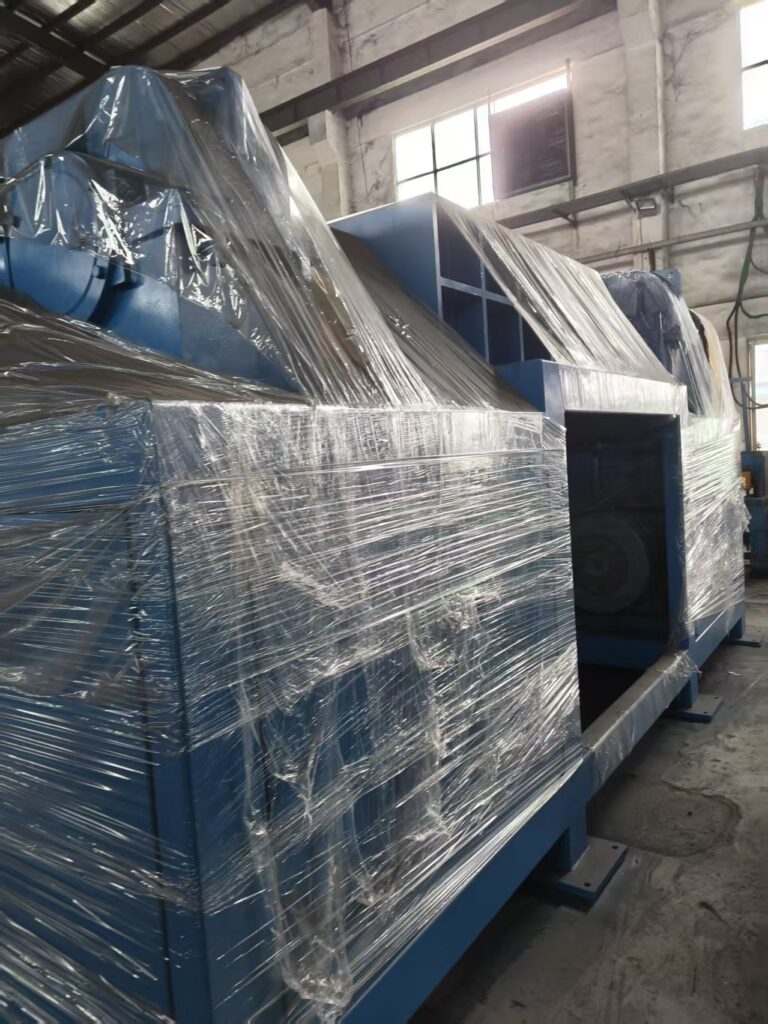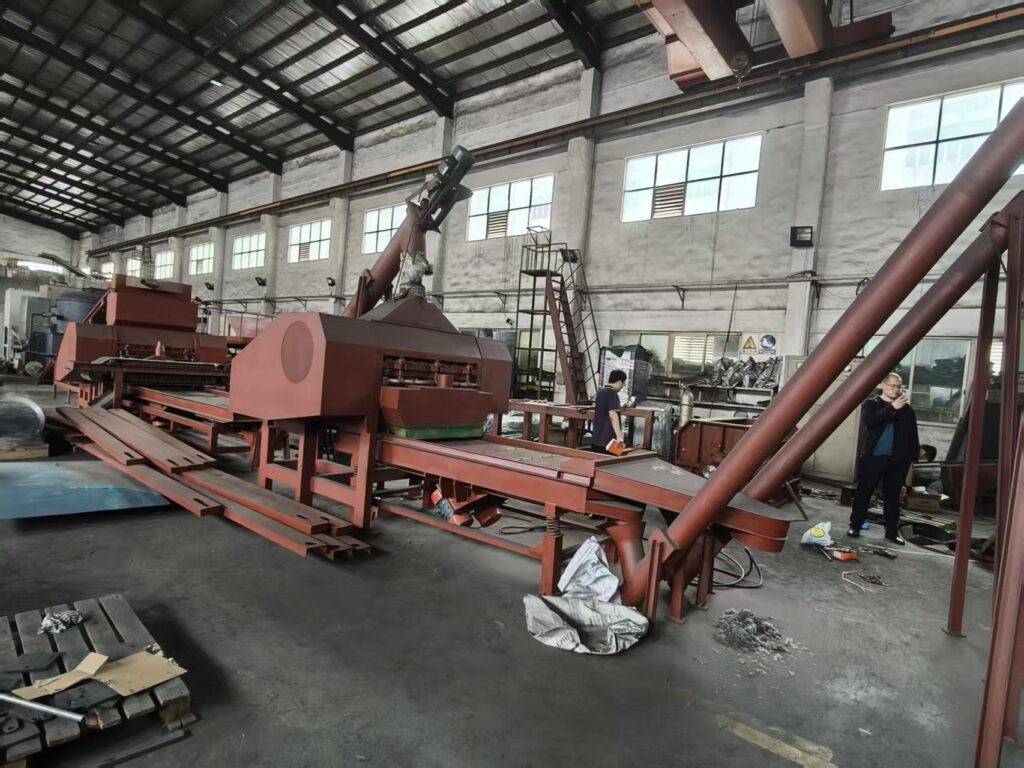Mountains of discarded tires clog up landfills.
They trap water.
They fuel mosquitoes.
They leach harmful chemicals.
The problem is glaring.
Waste tires threaten our environment.
They endanger wildlife.
They disrupt communities.
They cost municipalities millions.
The pain bites.
Fires burn.
Air chokes.
Soil poisons.
The solution can seem daunting.
I know that.
I’m the CEO of Amige.
We face this challenge daily.
We crush.
We shred.
We recycle.
We restore value.
We’ll explore how to reclaim these tires.
At its core, recycling waste tires involves four key steps: collection, sorting, shredding, and repurposing. First, gather scrap tires from volunteers, dealers, and drop-off centers. Next, sort them by size and condition. Then, shred them into chips or crumb rubber. Finally, transform the shredded material into valuable products like rubber mulch, asphalt modifiers, and fuel. It also yields tire-derived fuel for cement kilns and materials for civil engineering soil stabilization. With the right equipment and process control, this chain converts waste into profitable resources.
Curious? Great. Buckle up.
We’ll dive into why this matters.
We’ll explore challenges.
We’ll break down technologies.
We’ll showcase real-world success.
We’ll reveal how Amige leads the pack.

Why should we recycle waste tires?
Every year. The world produces an estimated 1.5 billion waste tires. According to global tire waste statistics, only about 20 % are properly recycled. The rest end up in landfills or illegal dumpsites. These mountains of rubber pose serious issues. They occupy valuable land. They leach toxic chemicals. They become breeding grounds for disease vectors. Landfill space is shrinking. Local governments spend millions hauling and disposing of scrap tires waste management costs. This cycle creates economic burdens. It damages ecosystems. It threatens human health. Our regulatory landscape grows stricter. Many regions now ban tire dumping. Incentives for recycling have emerged. Yet, infrastructure often lags. Why? Recycling tires requires specialized machinery. It demands energy and expertise. It needs coordinated logistics. That’s where innovators like us step in. As the CEO of Amige, I see the urgency firsthand. We witness communities struggle with old piles of tires. We understand the stakes involved. Recycling waste tires is not just an environmental duty. It’s an economic opportunity. It’s a chance to convert a liability into a revenue stream. It’s a win-win. It aligns with circular economy principles. It reduces dependence on virgin materials. It cuts greenhouse gas emissions. It creates new jobs in green industries. Additionally, high-quality crumb rubber fetches premium prices in construction and sports surfaces market demand report. Recycling drives innovation in product design. It sparks new possibilities in materials science. It fuels markets for rubberized asphalt, playground flooring, and eco-friendly textiles.
What challenges do we face in tire recycling?
Tire recycling seems straightforward. But it hides multiple hurdles. First, collection. Many scrap tires sit in remote areas. Locating and retrieving them costs time and money. Transportation expenses pile up. Next, sorting. Tires vary by size, brand, and condition. They may contain steel belts or textile fibers. Proper classification is essential before processing. Machines must adjust for these variables. Third, contamination. Oils, dirt, and residue hinder processing. They clog shredders. They degrade end-product quality. Cleaning steps add operational overhead. Fourth, technology. High-capacity shredders, granulators, and devulcanization units require significant capital investment. Not every recycler can afford such equipment. Maintenance costs escalate over time. Downtimes lead to lost revenue. Fifth, regulatory compliance. Environmental regulations dictate emission limits, waste handling protocols, and worker safety standards. Non‑compliance results in fines. Sixth, market fluctuations. Demand for recycled rubber can be volatile. Prices swing with oil markets and construction cycles. Recyclers may struggle to secure consistent buyers. Finally, public awareness. Many consumers still lack knowledge about tire recycling options. They toss tires into general waste. That reduces recovery rates. Overcoming these challenges requires a holistic approach. It demands strategic partnerships. It calls for smart logistics. It benefits from technological innovation. It thrives on supportive policies. At Amige, we tackle each hurdle. We optimize routes. We customize machines. We invest in R&D. We engage in community outreach. We ensure our processes meet or exceed environmental standards. Only then can we transform waste tires into a sustainable resource.

How can we efficiently collect and sort waste tires?
Efficient collection and sorting hinge on logistics design. First, we map tire waste hotspots. We collaborate with local tire dealers, junkyards, and municipalities. We deploy scheduled pickups and community drop-off events. We use geotagging tools to track collection points. That reduces wasted travel. It boosts volume per trip. At collection sites, we set up modular bins. They are color‑coded by tire type: passenger, light truck, heavy equipment. We encourage property owners to separate contaminated tires. We provide clear signage. We offer incentives, such as credits for returning tires. For remote areas, we partner with waste transporters. They integrate tire collection into existing routes. That leverages economies of scale. Once collected, tires go to sorting facilities. We employ visual inspection stations. We use automated imaging systems to detect steel belts. Incorporate magnets to extract metal. We use air classifiers to remove dust and debris. We then grade tires by condition. Some enter direct reuse channels. Others proceed to shredding. Digital tracking ensures traceability. Each batch carries a unique ID. We record weight, origin, and processing path. This data‑driven approach optimizes sorting accuracy, reduces contamination, and maximizes throughput. As a result, our plants achieve over a 95 % sorting efficiency rate.
What are the main recycling technologies available?
Recycling waste tires involves several key technologies. Each serves a specific purpose. The first is mechanical shredding. Industrial shredders slice tires into chips. They handle thousands of tires per hour. Chip sizes range from one inch to several inches. These chips feed granulators. Granulators further reduce chip size into crumb rubber. Crumb quality depends on mesh screens. We can produce granules down to 0.3 millimeters. Next, cryogenic grinding offers ultra‑fine powder. We freeze tires with liquid nitrogen. Then, natural brittleness aids pulverization. This method yields consistent particle sizes and minimal heat damage. Devulcanization is another breakthrough. It reverses cross‑linking in rubber. Chemical, mechanical, or ultrasonic methods work. It restores plasticity. That makes recycled rubber blendable with new compounds. Pyrolysis is gaining traction. It thermally decomposes rubber in oxygen‑free environments. Pyrolysis oil, gas, and char emerge as outputs. Oil refines into fuel. Char can cure new rubber or serve as activated carbon. Gas runs generators. Each technology offers trade‑offs. Mechanical methods are mature but limited to crumb products. Cryogenic yields high purity at high energy costs. Devulcanization unlocks polymer regeneration but involves chemicals. Pyrolysis recovers energy but emits emissions. As CEO, I weigh these factors daily. I select the right mix for project goals. Our Amige plants combine mechanical shredding with selective devulcanization. This hybrid model delivers versatile output. It reduces emissions. It maximizes material recovery. It ensures profitability. Understanding these technologies empowers us to design custom recycling lines. It transforms waste tires into raw materials for diverse industries.

How does Amige’s process stand out?
Our approach at Amige is built on innovation and efficiency. We start with robust equipment. Our custom‑designed shredders handle various tire sizes. They use advanced cutting blades. They reduce energy consumption by 15 % compared to industry standards. We integrate material sensors. They detect contamination in real time. We adjust process parameters automatically. We minimize human error. Our modular plant design offers scalability. We can process anywhere from 100 to 1,000 tires per hour. We incorporate waste heat recovery. We capture thermal energy from shredding motors. We use it to preheat devulcanization reactors. This reduces fuel costs. Our proprietary software offers full transparency. We track every batch from collection to final product. Clients can trace products via QR codes on packaging. We ensure compliance with all environmental regulations. We hold ISO 14001 certification. We engage with local communities. We host educational workshops. We provide tire recycling kits to small businesses. We empower stakeholders. As CEO, I’m proud of our team. We don’t just recycle tires. We reinvent the process. We set new industry benchmarks. We turn tires into high‑value materials while preserving the planet.

What are the market applications for recycled tire materials?
Recycled tire materials have diverse applications. One major use is rubberized asphalt. It enhances road durability. It reduces noise. It lowers maintenance costs asphalt performance data. Another is playground surfaces. Crumb rubber cushioning prevents injuries. It meets safety standards for schools and parks. Civil engineering uses rubber chips in embankments. They improve drainage and reduce settlement. The construction sector values rubber‑modified concrete for flexibility. Manufacturers blend devulcanized rubber into new tires and hoses. They achieve better abrasion resistance. The sports industry uses crumb rubber infill in artificial turf fields. It offers shock absorption. It extends turf life. Rubber mulch in gardening controls weeds and retains moisture. In the energy sector, pyrolysis oil from tires serves as alternative fuel in cement kilns. Activating char produces high‑surface‑area carbon for filters and electrodes. The fashion and art communities experiment with rubber composites for accessories and furniture. New ventures explore 3D printing filaments made from recycled rubber. Market demand continues to grow. Prices for crumb rubber have risen by 8 % annually over the past five years. This trend presents lucrative opportunities. We, at Amige, are poised to deliver premium recycled rubber to a spectrum of industries.
As waste tires accumulate, recycling becomes imperative. My team and I at Amige believe in turning challenges into opportunities. By leveraging advanced technologies and smart logistics, we can reclaim tire value. Let’s collaborate to drive this circular revolution. Together, we’ll ensure tires get a second life.
